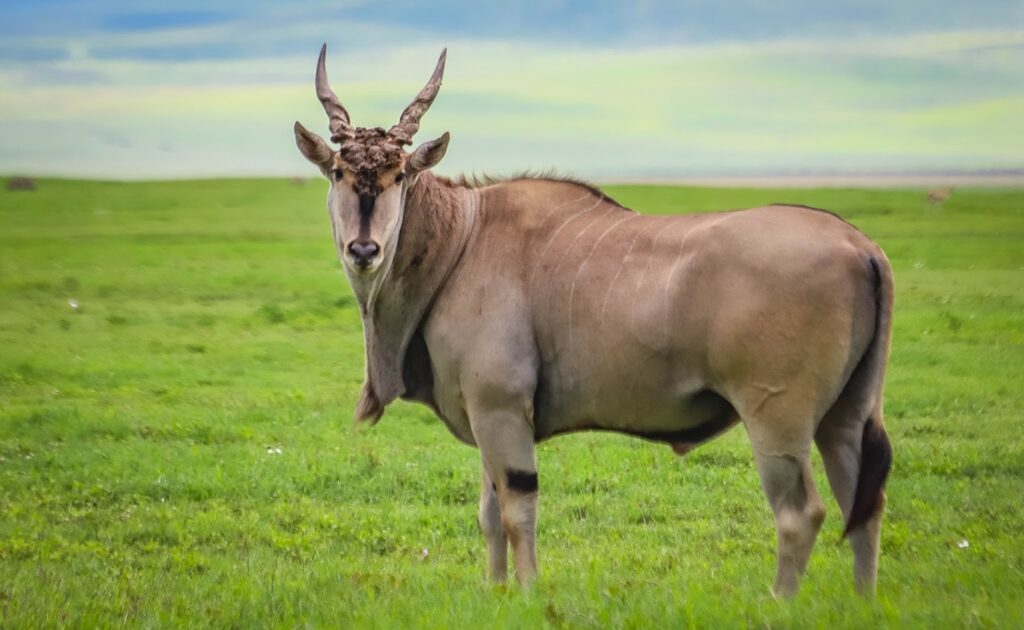Saadani National Park
Where the Bush meets the Beach
Saadani National Park
Saadani National Park is a one of a kind paradise with a unique ecosystem where beach life meets wilderness. This gives you not only the opportunity to plunge into the Indian Ocean straight after your safari but also to be submerged in a unique display of both marine and mainland flora and fauna in a naturally fascinating setting.
The name Saadani has a close link to the Arab settlement in the area during the 19 Century. The name of a fishing village that, was originally known as Utondwe changed to Saadani.Saadani is such an important name in the country’s history since the time immemorial centuries or more, mentioned in chronicles of the Portuguese and notable travellers like Johannes Rebman, El-Masoud, Ptolemy, and Richard Burton among others. The historical Saadani leaves us with the evidence of not only visits of these travellers, but also of a former town which was once a trade centre coordinating overseas and hinterland bather trade, including the slave trade.
It was officially declared to National Park status in 2005 under Government Notice No. 188. The Park covers an area of 1,100sqkm after the annexation of the former Saadani Game Reserve, Mkwaja Cattle Ranch, Zaraninge Forest Reserve and Wami River.
Info About Rubondo Island National Park
Climate
The Park experiences an Eastern African coastal climate with bimodal rainfall, which ranges from 800 – 1200mm annually. Long rains fall from March to June and short ones from October to December. February and July are the best driest months with peak temperatures reaching up to 29C. The best period for visits is the dry season, although the Park remains attractive year-round.
Park Purpose
Protection and conservation of coastal zone and its diverse resources and range of activities including the Beach, Green turtle and its habitat, Zaraninge low land forest, Estuaries and mangrove at Wami river, endemic, rare and endangered species, historical and cultural sites and interesting mix of scenery.
How to get there
By Road
- 131km from Dar es Salaam via Bagamoyo off Makurunge to Gama Entrance Gate
- 146km from Tanga via Pangani and Mkwaja to Madete Entrance Gate
- 225km from Dar es Salaam off Chalinze and Mandera junction via Miono to Mvave Entrance Gate
- On the Arusha – Dar es salaam road, off Mkata Junction via Kwamsisi to Madete Entrance Gate 79km from Mkata to Madete.
Park Attractions
These are places of interest where tourists visit, typically for their inherent or exhibited natural or cultural value, historical significance, natural or built beauty offering leisure, adventure and amusement to visitors.
Wild Animals
The spectacular concentration of wild animals like Waterbuck, Giraffe, Warthog, Yellow baboon, Reedbuck, Bushbuck, Hartebeest, Elephant, Buffaloes and Lion is obviously. Wami River and Estuary
Mafui Sandbank
It is within the marine extension of the park whose colourful coral reefs are important breeding sites for many fish species. While in the sandbank tourist enjoys snorkelling and diving underwater and learning about many different types of Indian Ocean living organisms. The chances of seeing dolphins and humpback whales putting on their show in the Indian Ocean are beyond.
Madete beach and nesting site for Green Turtle
Madete beach is one of the most significant breeding sites for the Green turtle the largest of the hard-shelled sea turtles in Tanzania. A Female Green turtle lays eggs along the shore and returns to the sea. The high season is from July to November and the moderate season in January – to March. Approximately 8 nests can be available during the season. The incubation time of the eggs buried in the sand is 45 – 60 days after which the hatching emerges.
Wami River and Estuary
It is among the few African coasts where large wildlife is still present in an estuarine situation. Here you are as close as one likes to get to hippos, crocodiles and other wildlife. Bird watchers will also be treated to not-often-seen migratory birds that love the shore, such as different kinds of sandpiper, Eurasian oystercatcher and the common greenshank. Evergreen mangrove trees along the river provide resting and feeding places for many bird species, bats, monkeys and other reptiles.
Zaraninge Forest
It is an evergreen lowland coastal forest with a closed canopy. Zaraninge is known to be home to some endemic, rare and threatened species of plants and animal life. It mostly supports elephant life during the dry season.
Pangani town
The name Pangani owes to the river that runs through the northern part of the Historical Town. Pangani is a very old town, it is believed to be established before the 6th Century BC as a coastal dhow port, but later became a station on the caravan route from Late Tanganyika for exporting slaves and ivory. Several historical sites in and around the town serve as reminders of the strong Arabic influence and the later German, and British colonial era in Tanganyika. The town served as a port when sisal plantations were set up in the colonial period before the Tanga Harbour was constructed. Nowadays it is mainly a fishing town with a lot of coconut trees, providing nice beaches for a quiet vacation. Pangani is close to Sadani only 40km to Madete entry gate which is an approximate 1hr drive on a rough road.
Activities
Game Drive
This activity is conducted from 06:30 – 18:30 HRS, with no additional fee for this activity. Four-wheel (4X4) drive vehicles are recommended, although the roads are easily accessible during the dry season.
Guided walking to the bush(1-3hours)
The preferable time to conduct the activity is from 06:30 to 10:00 and in the evening from 15:30 to 18:30. Prior information is required for the activity.
River Cruising at Wami River
The activity is conducted at Wami River to the estuary area and takes a maximum of 2hrs
Visit to Mafui Sandbank
Visitors interested to picnic, swimming and sighting different marine organisms normally go to this sandbank. Organisms like starfish and corals can be easily encountered. Professional snorkelling and diving activities are conducted with their own tourist tools.



